Liggett & Myers Tobacco Company (1912-1970s)
Introduction
Text-to-speech Audio
Images
The Liggett and Myers Tobacco Company Warehouse today
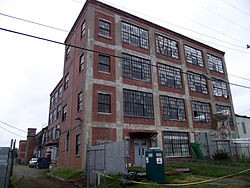
An advertisement for Liggett & Myers.
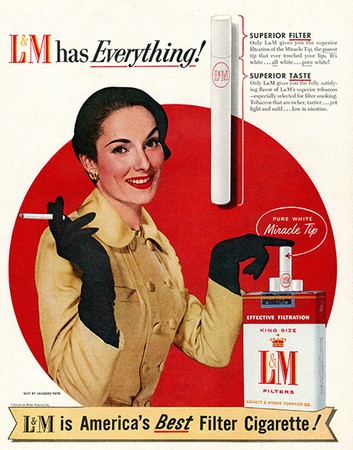
Liggett & Myers is visible at the top right, here in 1955
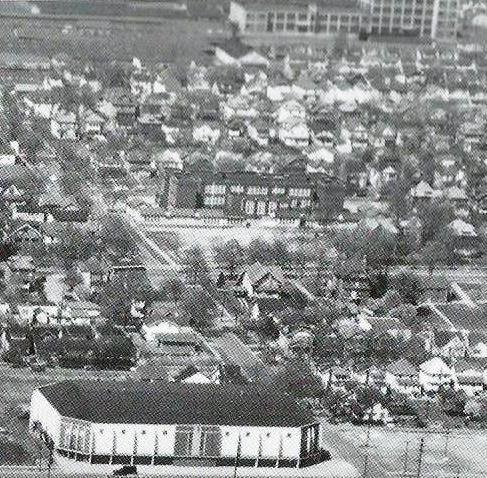
Postcard of the Huntington Tobacco Warehouse, 1914
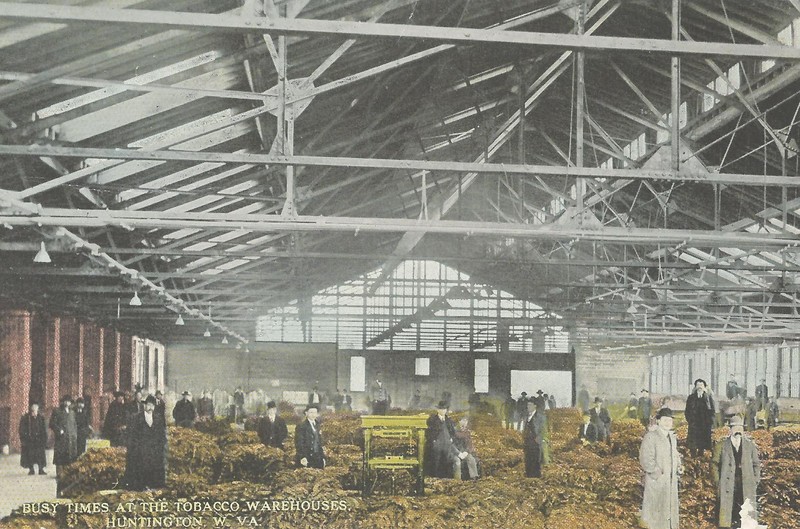
Inside the Huntington Tobacco Warehouse
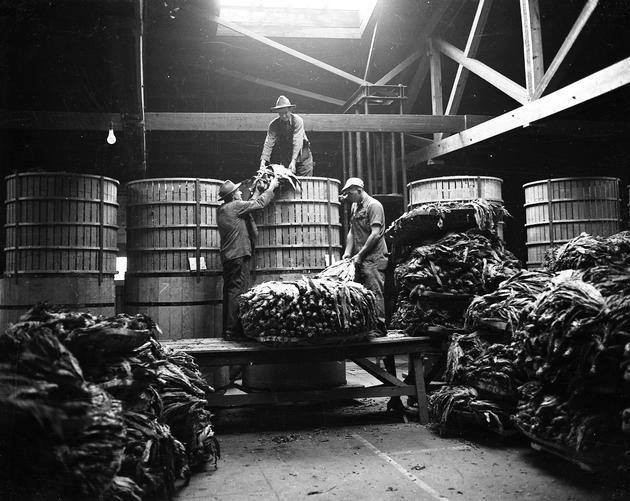
Outside the factory, 1998
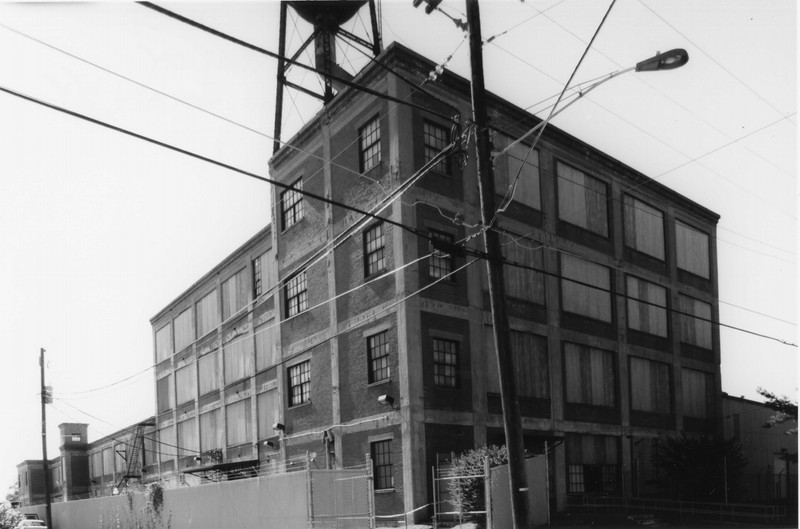
The factory's entrance, pictured in 1998

The two-story addition to the factory, completed in 1920
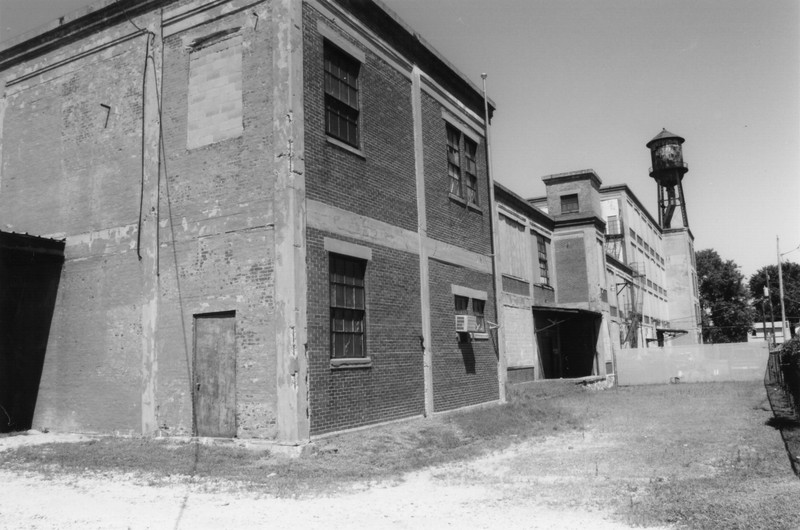
Looking along the former factory, 1998
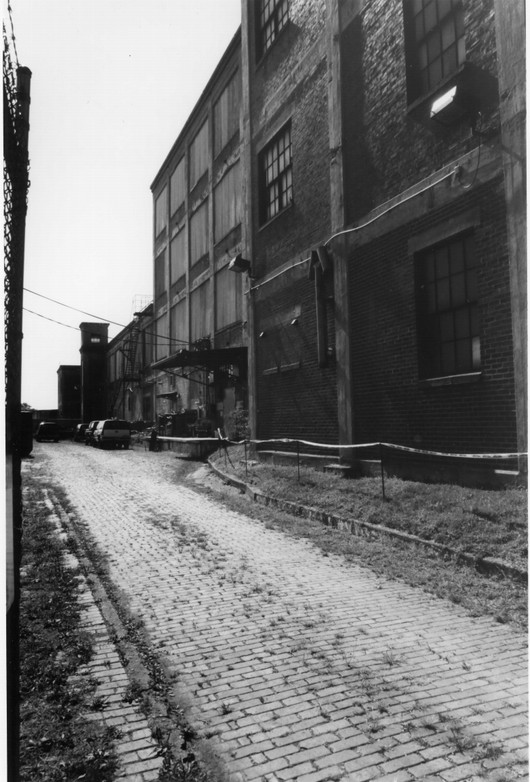
Loading dock of the former factory, pictured in 1998

Along the loading dock of the former factory
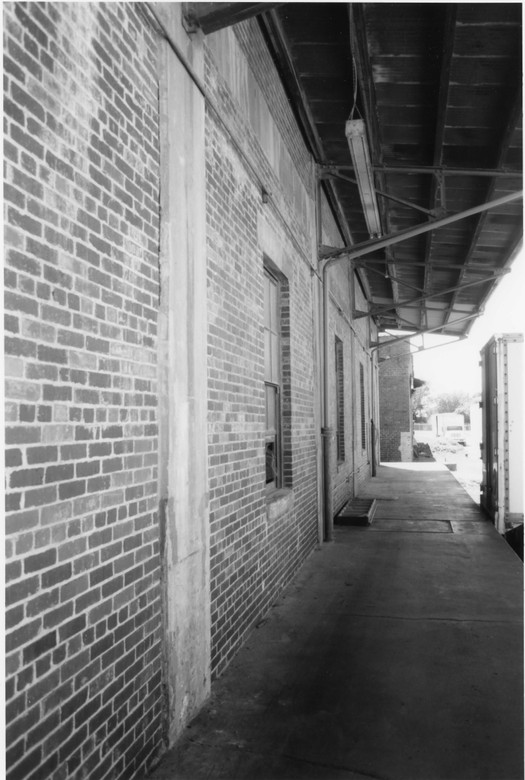
The redrying facility, built in 1910
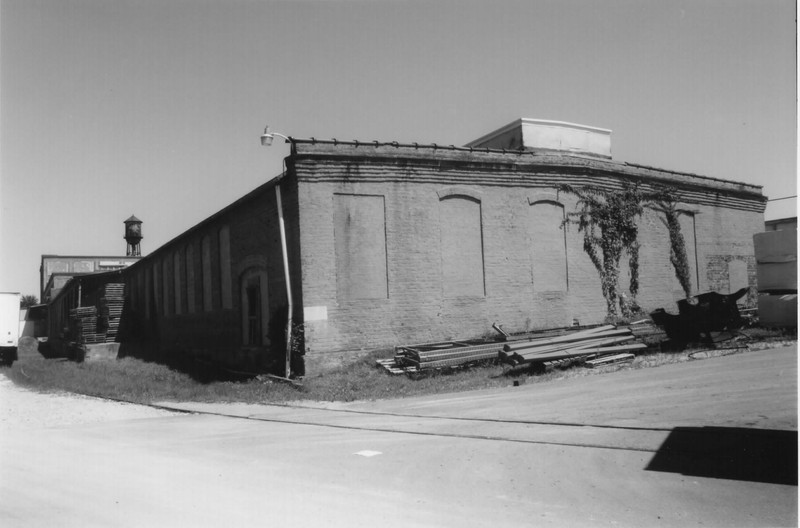
Inside the former factory in 1998
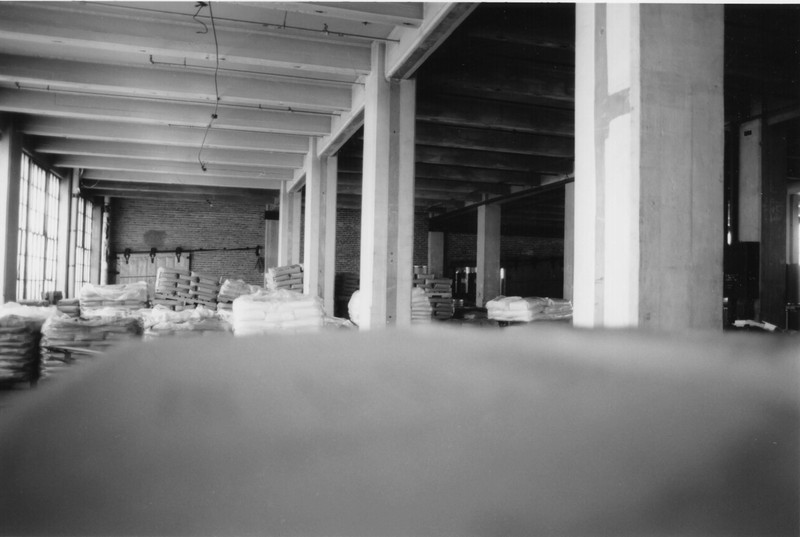
Inside the former factory 1998
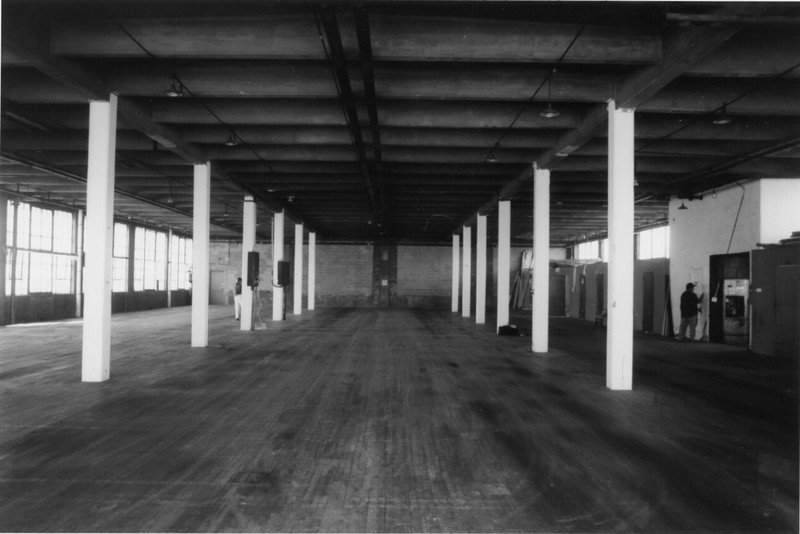
Backstory and Context
Text-to-speech Audio
Before the Civil War, southwestern West Virginia played a significant role in the tobacco industry. West Virginia’s main tobacco-growing counties were Mason, Putnam, Lincoln, Cabell, and Jackson, although tobacco was grown in over a dozen additional counties. Nearly all tobacco produced in the state was the burley type, which was also the most common variety grown nationwide. While some tobacco was sold right off the farm, the sale of tobacco was generally conducted through special warehouses. The auction season opened in late November and continued until the regional crop was sold. For decades, the closest tobacco markets were located in Kentucky, meaning West Virginia's products had to be shipped by river boat. Although the tobacco market went into a decline during and after the Civil War, the industry had recovered by the 1870s. In 1875, the West Virginia state legislature passed an act allowing for the inspection of tobacco as well as establishing state superintendents of tobacco warehouses and inspectors for each warehouse.
By the late nineteenth century, tobacco warehouses were well established near Huntington at Milton and Hurricane. Huntington’s first tobacco warehouse was a brick building located at Third Avenue and Seventh Street, but it was abandoned after only one year due to low production. Around 1910, the American Tobacco Company chose a site in Huntington for a new tobacco market. Local sellers organized the Warehouse Land Company and purchased land between 26th and 27th Street and First Avenue. The location was selected for its access to the Ohio River and the C&O Railroad, which allowed for greater shipping possibilities and a central location for the region's tobacco-growing states. At the site, a former stove foundry was converted to auction warehouses, which were then leased to the Huntington Tobacco Warehouse Company. The following year, Hughes, Ellis and Boyd Tobacco Warehouse Company purchased three acres on the west side of 26th Street and built warehouses of its own.
In 1912, Liggett & Myers Tobacco Company purchased a section of property in Huntington’s burgeoning tobacco district from the Warehouse Land Company. Liggett & Myers built a cigarette factory and storage sheds there, along with a railroad siding. By 1916, Liggett & Myers and the other companies under the Huntington Tobacco Warehouse Company employed one hundred employees. Along with cigarettes, the Liggett & Myers facility also produced “Old White” cigars. In 1917, Liggett & Myers factory built a new four-story, red brick, Commercial Style warehouse building. The facility retained its redrying plant and boiler house, which were located to the west of the warehouse. As production of and demand for tobacco rose, a two-story addition was installed at the rear of the factory in 1920.
The Liggett & Myers Tobacco Company can trace its origins back to the early nineteenth century. Christopher Foulks, the grandfather of John Edmund Liggett, was the owner of a snuff mill in New Egypt, New Jersey, which was razed by British soldiers during the War of 1812. Around 1820, Foulks moved west and opened a new snuff shop in Belleville, Illinois. In 1833, he relocated his tobacco business to St. Louis, Missouri, where John Edmund Liggett joined the business in 1847. By 1858, the company was known as J. E. Liggett and Brother. The company then partnered with George Smith Myers of Missouri, and in 1873 the Liggett & Myers Tobacco Company was founded. The company entered the cigarette business during the 1880s, and had become the world’s largest manufacturer of plug chewing tobacco by 1885. After John Liggett passed away in 1897, the Liggett & Myers Tobacco Company became part of the American Tobacco Company. In 1911, the United States Court of Appeals ordered the American Tobacco Company to dissolve, which allowed Liggett & Myers Tobacco Company to be reborn as an independent company. The company continued to manufacture many of the cigarette brands that it had been awarded following American Tobacco Company’s dissolution, and released new brands as well.
West Virginia tobacco production peaked at fourteen million pounds during the early 1900s, making it the twelfth largest tobacco-growing state in the country. In 1910, eight million pounds of tobacco were sold in West Virginia, and in 1918 nine million five hundred and fifty-seven pounds were sold at 35.47 cents per pound. Huntington’s tobacco market reached its peak between about 1920 and 1925. Several of the companies in Huntington;s tobacco district, such as Ellis and Boyd Company and Grayson D. Thornton, eventually sold out to the Huntington Tobacco Warehouse Company owned by L. Jack Knight. The Liggett & Myers factory remained in business through these changes until the early 1970s, when it came under the ownership of a realty company. Meanwhile, the Huntington Tobacco Warehouse grew into the state’s longest-running tobacco auction house, even surviving a disastrous fire in August of 1963. In 1980, Jack Knight Jr. leased the historic warehouse to Allied Realty Company, who purchased it in 1990 and renamed it the Pride In Tobacco Market.
By this time, however, West Virginia tobacco production and sales had entered a period of decline. The end of the federal allotment program for tobacco farmers eliminated the auction market system and consequently devastated tobacco production. Tobacco companies then largely switched to contracts with large American and international tobacco producers, which eliminated the demand for West Virginia producers. As a result of these changes, the Pride In Tobacco Market closed after the 1997 season. The market is currently an industrial warehouse complex operated by REO Logistics, a successor company to Allied Realty. Meanwhile, the former Liggett & Myers factory was added to the National Register of Historic Places. The facility is currently used for light industrial purposes, but it may be repurposed in the future as part of the Huntington Brownfields Innovation Zone, a plan to redevelop the Highlawn neighborhood and surrounding areas.
Sources
Casto, James E. Lost Huntington: The tobacco warehouse, Huntington Herald-Dispatch. June 13th 2017. Accessed August 5th 2020. https://www.herald-dispatch.com/special/lost_huntington/lost-huntington-the-tobacco-warehouse/article_1b003be1-52bf-553e-b453-fd25e4dc417e.html.
Long, Scot E. "Tobacco." e-WV: The West Virginia Encyclopedia. 17 January 2019. Web. 05 August 2020.
“National Register of Historical Places Nomination Form.” Accessed November 20, 2016. http://www.wvculture.org/shpo/nr/pdf/cabell/98001073.pdf.
https://www.facebook.com/photo.php?fbid=1821990877830507&set=gm.1939087402982000&type=3&theater&ifg=1
https://www.herald-dispatch.com/special/lost_huntington/lost-huntington-the-tobacco-warehouse/article_1b003be1-52bf-553e-b453-fd25e4dc417e.html
https://www.facebook.com/photo.php?fbid=1675256992514487&set=p.1675256992514487&type=3&theater
http://www.wvculture.org/shpo/nr/pdf/cabell/98001073.pdf
http://www.wvculture.org/shpo/nr/pdf/cabell/98001073.pdf
http://www.wvculture.org/shpo/nr/pdf/cabell/98001073.pdf
http://www.wvculture.org/shpo/nr/pdf/cabell/98001073.pdf
http://www.wvculture.org/shpo/nr/pdf/cabell/98001073.pdf
http://www.wvculture.org/shpo/nr/pdf/cabell/98001073.pdf
http://www.wvculture.org/shpo/nr/pdf/cabell/98001073.pdf
http://www.wvculture.org/shpo/nr/pdf/cabell/98001073.pdf
http://www.wvculture.org/shpo/nr/pdf/cabell/98001073.pdf
